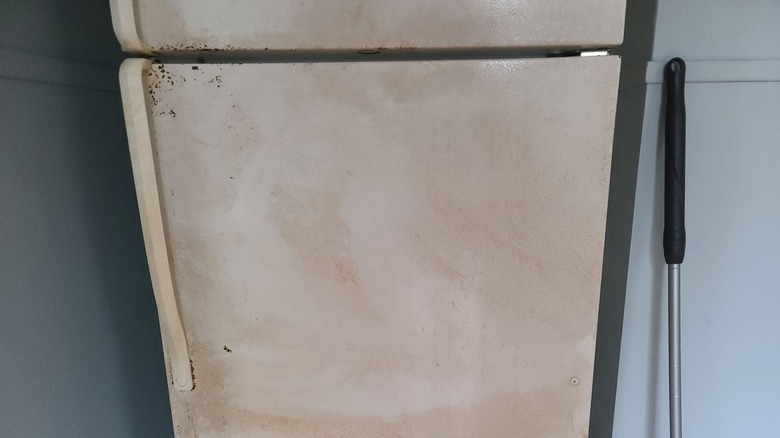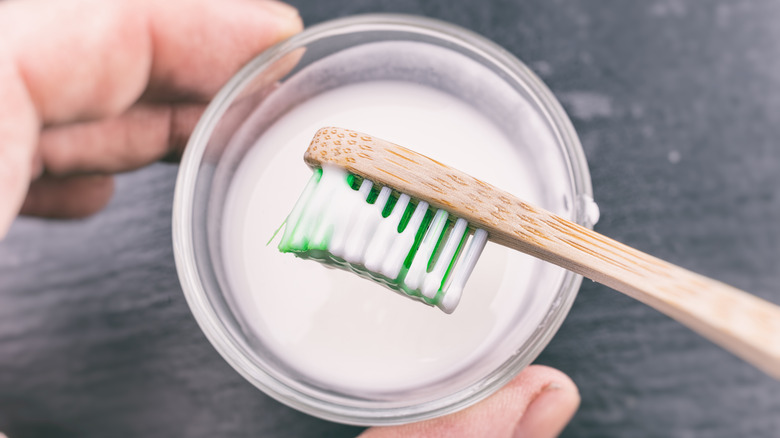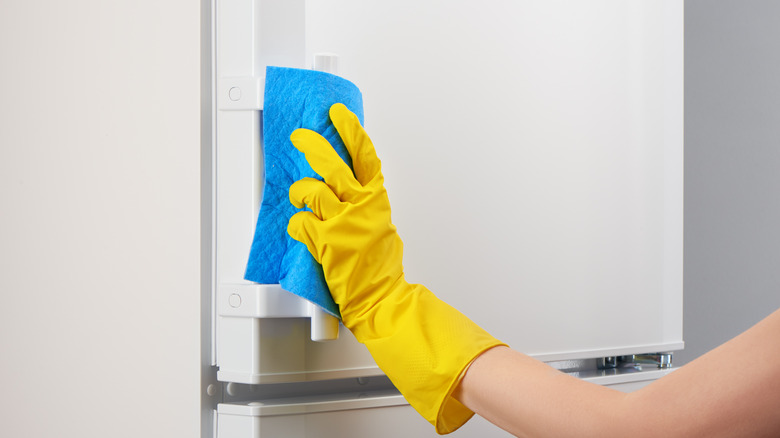The Best Way To Banish Rust From The Exterior Of Your White Fridge
We may receive a commission on purchases made from links.
Rust on the exterior of a white fridge is not just an eyesore; it's a sign of deterioration that, if not addressed, can significantly shorten the lifespan of your appliance. However, there's no need to worry. A dependable method for removing rust involves a simple, three-level approach, incorporating baking soda, white vinegar, and a commercial rust remover as a last resort. This method offers a gradual escalation in treatment intensity, starting with gentle household items before moving to stronger commercial solutions, ensuring you can effectively tackle the rust and make your fridge last longer.
Rust formation on a white fridge is primarily due to oxidation, a chemical reaction involving iron, oxygen, and moisture. This issue often arises from the natural aging process of the appliance but can also occur if the fridge was initially coated inadequately. The problem can be further aggravated by scratches or dents on the fridge's exterior, which breach the protective coating, allowing moisture to seep in and react with the metal beneath.
Instances like using steel wool for cleaning can leave behind tiny steel particles on the fridge's surface, leading to rust formation. When left on the surface, these particles create ideal conditions for rust to develop, highlighting the importance of using appropriate cleaning methods to maintain the integrity of your fridge's exterior. Now, let's ensure you have all the necessary supplies to start. Prepare warm water, a soft cloth or sponge, baking soda, white vinegar, a soft-bristled brush, or a non-abrasive scrub pad.
Removing rust from a white fridge's exterior
Before starting the rust removal process, it's crucial to prioritize your safety. Ensure you wear protective gloves and, if necessary, safety glasses to safeguard your skin and eyes from potential irritants. From there, try a level one approach, which is best for most fridges. Start by making a paste from baking soda and warm water and applying it generously onto the rust spots. Allow it to sit and work its magic for about an hour. After the time has elapsed, take a soft-bristled brush or a non-abrasive scrub pad and gently brush the area until the rust is completely removed.
If that doesn't quite do it, bring on level two and use a cloth soaked in white vinegar. Wrap it around the affected area and let it sit overnight to loosen the rust. Finish by gently scrubbing in a circular motion until the rust is removed. Once the scrubbing is complete, rinse the area with water and dry it thoroughly with a clean cloth. If you discover any scratches or exposed areas during this process, apply a small amount of touch-up paint designed for appliances. If level one and level two do not work, consider using a commercial rust remover like Bar Keepers Friend, an oxalic acid rust remover recommended by professionals. Be sure to follow the product's instructions carefully to avoid damaging the fridge's finish, and always test it in an inconspicuous area first.
Future rust prevention and the benefits of upgrading
Preventing rust from forming on the exterior of your white fridge is crucial for maintaining its appearance and functionality. To achieve this, it's essential to adopt specific measures like managing humidity levels, particularly in high-moisture areas; using a dehumidifier can significantly reduce the risk of oxidation, which leads to rust formation. Additionally, regular inspections of your fridge for any signs of damage or wear are vital. Promptly addressing these issues can prevent moisture from penetrating the surface and causing rust. Lastly, never make the fridge cleaning mistake of using agents containing bleach, alcohol, ammonia, or chlorides; even disinfectants can damage your appliance.
Even with diligent care and maintenance, there may come a time when replacing your fridge becomes the more practical option. This could be due to extensive rust that has deeply penetrated the fridge, compromising its structural integrity. Older fridges tend to be less energy-efficient, so upgrading to a new model could significantly save energy costs. Furthermore, if removing rust and making necessary repairs exceeds the price of a new fridge, it might be time to consider replacement.
Realistically, you don't need an appliance expert to help you save your fridge. With willpower and some household items, it's possible. Remember, understand the causes of rust, prevent it from happening, and implement effective removal techniques. This will allow you to maintain your appliance's aesthetic and operational integrity for many years to come.


